05.10.2022
ECKOLD revolutionises teach-in of robot clinching frames
Time and cost savings of 50 % and more
Teaching robots and devices attached to them can be a time-consuming process, be it during commissioning or subsequent maintenance. However, correct teach-in is indispensable for automated and cost-efficient production.
This obviously also applies to ECKOLD clinching frames – tools that are widely used in automated car body production by virtually all renowned car manufacturers. Of particular importance here is the exact angle position of the die relative to the sheet metal. Required is an angle of 90° ± 1°, and deviations have significant negative effects on both the joints and the service life of the tools.
Up to now, such precise angle positions could generally only be achieved by taking extra measures, as the actual joining points are often concealed during the teach-in process. Programmers therefore resorted to feeler gauge tapes and torches.
Luckily, there is now a tool available to optimise the teach-in process: the new ECKOLD TeachCap. This aid caters for all clinching die types most commonly used in automated production. For robot teaching, the clinching die is simply replaced by a TeachCap of the same geometric size. The programmer can thus focus on moving the robot tool to the optimum positions without having to worry about secondary faults. As the die and the TeachCap are of the same height, there is also no problem as regards distances, and a rubber ring keeps the TeachCap away from interfering edges and radiuses. The main innovative feature of the TeachCap is of course that is lit the moment the optimised angle position is reached.
What is robot teaching?
In robotics, the terms "teach-in" or "teaching" describe the procedure of programming a robot. The programmer thereby acts as a tutor and moves the robot by means of a control interface from one machining position to the next. The robot path is thereby recorded point by point in the control system. This procedure is repeated until all movements of the entire machining cycle have been recorded. The resulting program then enables the robot to move autonomously along the stored coordinates. The movements from point to point can be controlled by additional parameters such as speed and acceleration. In certain robots, it is also possible to program the accuracy at which these motions are to be performed.
If we consider a workpiece such as a car bonnet or boot lid with 50 to 100 clinching points, it is obvious that teaching the robot is a lengthy and costly process, as each single clinching point as well as the movements from one point to the next must be programmed individually. In a worst case, teaching needs to be repeated over and over again until everything works smoothly. Getting it right from the start, preferably with one single teach-in run, is what all programmers aim at.
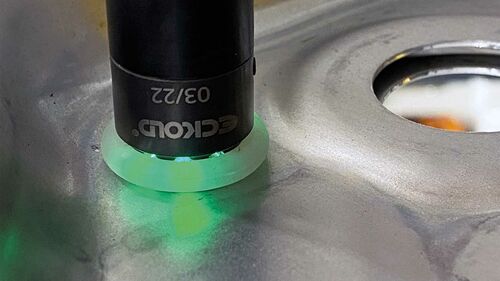
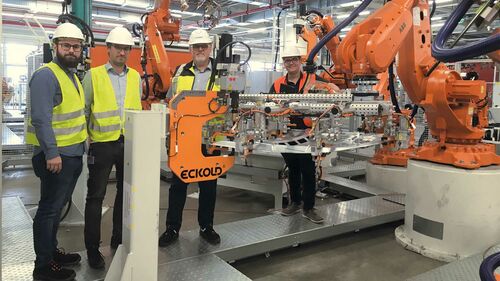
The ECKOLD TeachCap significantly shortens the teach-in time. In addition, it prolongs the service life of clinching tools thanks to optimised joining angle programming.
Current users report a reduction in the setup and commissioning time of 50% and more. Teaching with the ECKOLD TeachCap often produces already good results after only one programming run along all clinching points, reducing the total number of runs required to complete the teach-in process.
The TeachCap pilot project was supervised by Andreas Seiffert, head of production at ECKOLD, and Florian Auernhammer from VW, who brought the innovative method to market. Final testing was completed in cooperation with Thomas Redler, project manager at AUDI.
Advantages and characteristics at a glance
· Shorter setup and programming times
· Faster teaching of robots
· Improved quality of initial teach-in processes
· Rubber ring serves as distance guide to interfering edges and radiuses
· Prolonged tool service life
· Easy handling: simply replace the die with the TeachCap
· Efficient optimisation of production process
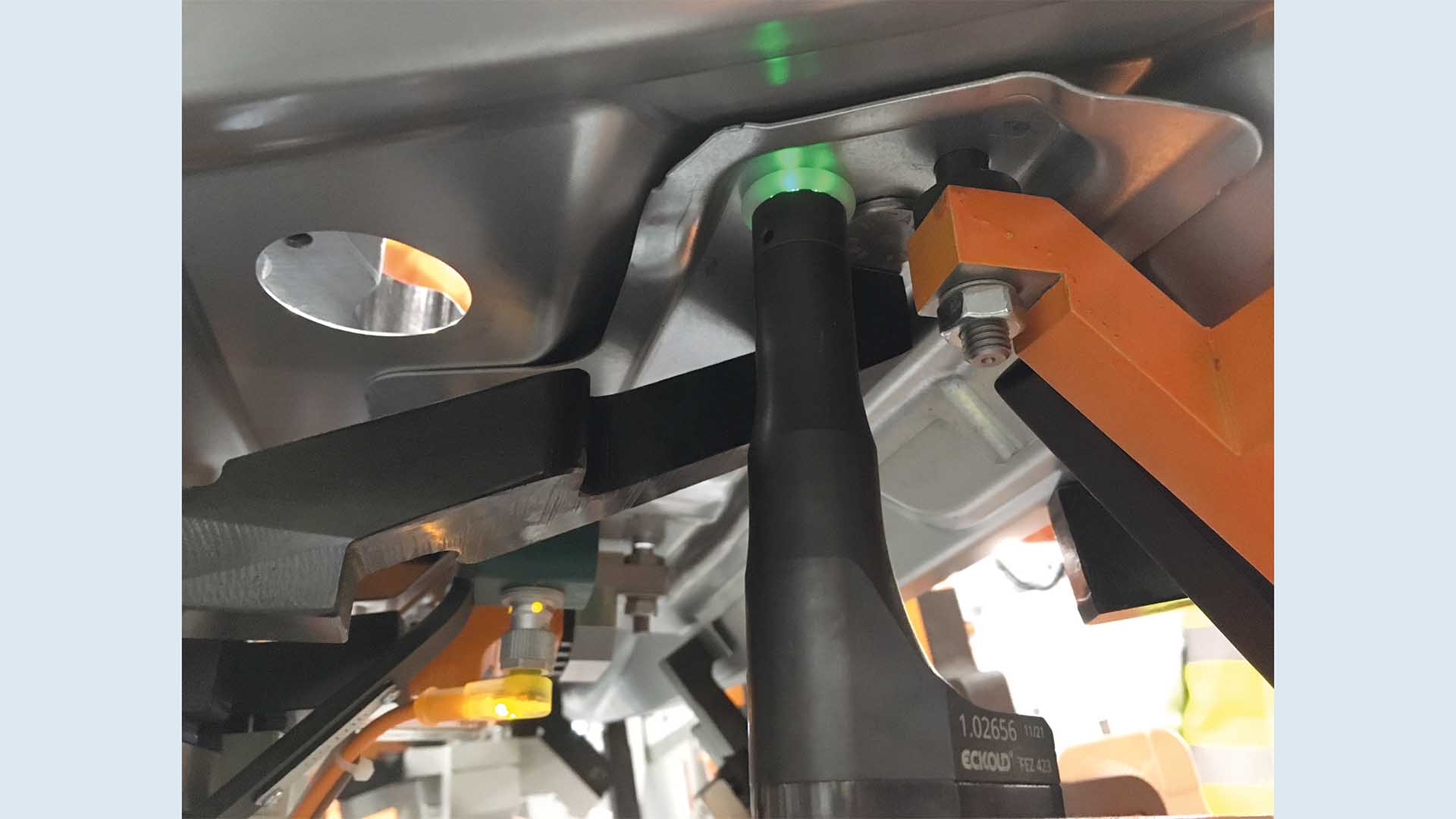
How do I know that there is an angle position problem with a programmed clinching frame?
At first glance, assessing the quality of clinching points might appear to be a relatively easy task. In some cases, this might even be true. However, issues that are not nipped in the bud often prove detrimental in the long run.
In other words, it is generally advisable to get things right from the beginning rather than making costly corrections later on. And the evaluation of clinching points and their quality is no exception. In our first example concerns the angle position.
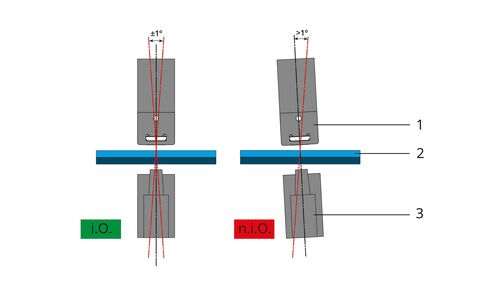
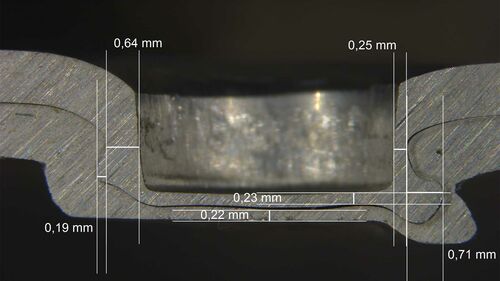
Incorrect angle positions result in asymmetric clinching points on the die side. As a consequence, the retention force of the joint might be insufficient.
Micrographs and measurements tell us a lot about the quality of the clinching point and of the joint, as they reveal faults and flaws that affect the retention force and thus the quality of the product.
Such detailed inspections can obviously not be performed at every single clinching point or workpiece. However, in series production plants, examining and measuring micrographs are part and parcel of the setup procedure for production cells, and such inspections are also routinely performed during production.
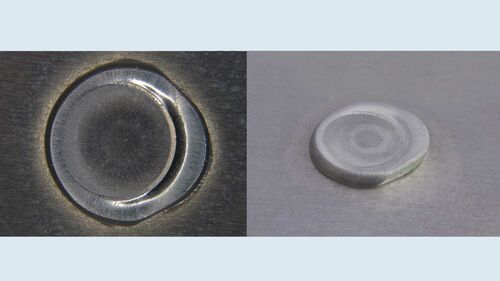
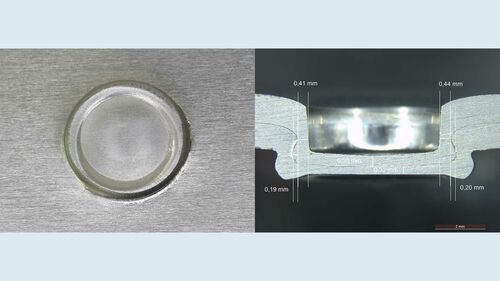
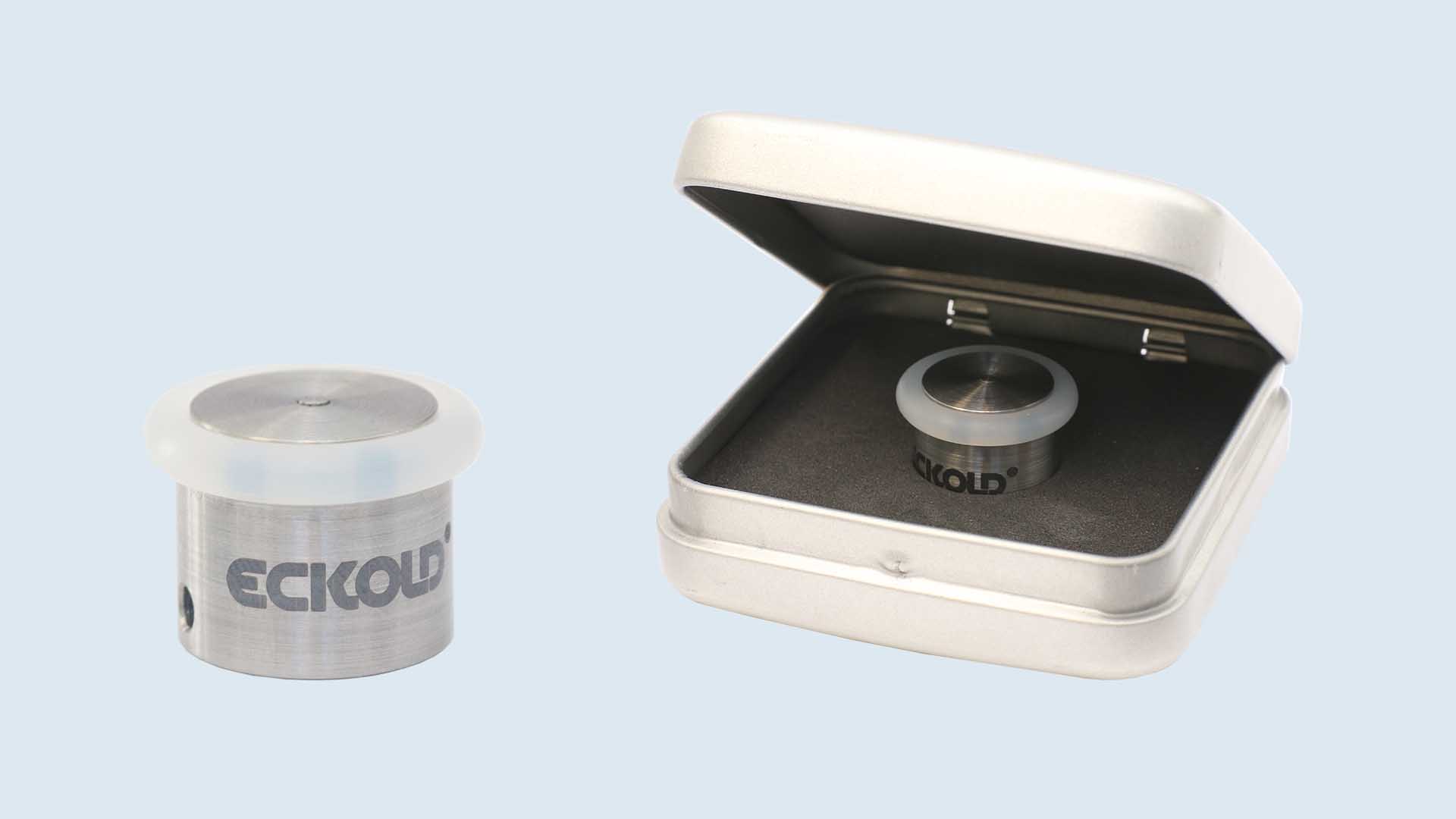

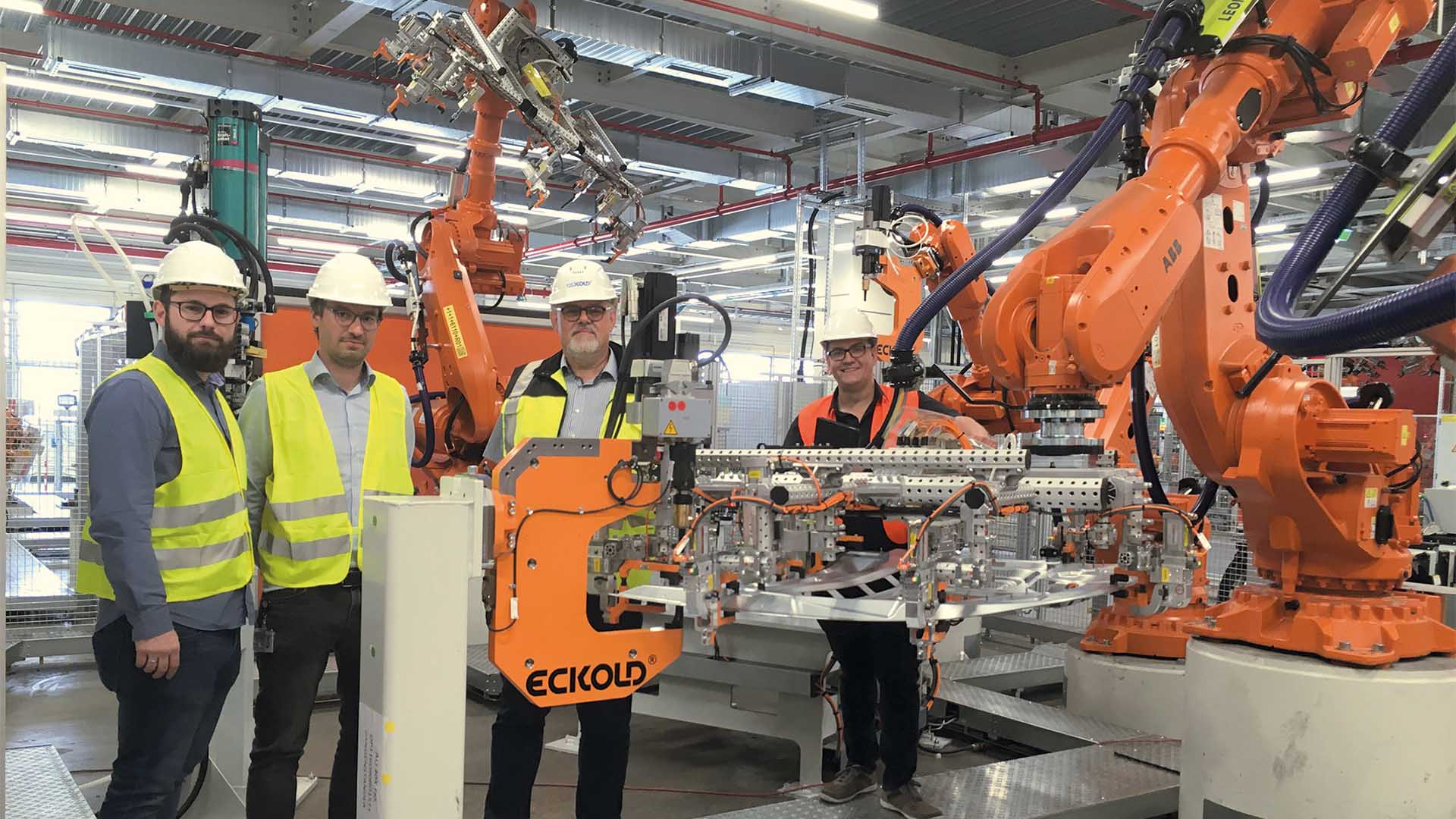
Comments are disabled for this post.
0 Kommentar